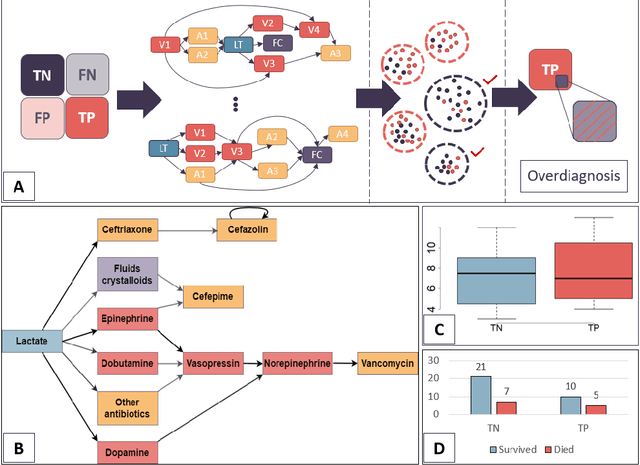Quantifying machine learning-induced overdiagnosis in sepsis
Paper and Code
Jul 03, 2021
The proliferation of early diagnostic technologies, including self-monitoring systems and wearables, coupled with the application of these technologies on large segments of healthy populations may significantly aggravate the problem of overdiagnosis. This can lead to unwanted consequences such as overloading health care systems and overtreatment, with potential harms to healthy individuals. The advent of machine-learning tools to assist diagnosis -- while promising rapid and more personalised patient management and screening -- might contribute to this issue. The identification of overdiagnosis is usually post hoc and demonstrated after long periods (from years to decades) and costly randomised control trials. In this paper, we present an innovative approach that allows us to preemptively detect potential cases of overdiagnosis during predictive model development. This approach is based on the combination of labels obtained from a prediction model and clustered medical trajectories, using sepsis in adults as a test case. This is one of the first attempts to quantify machine-learning induced overdiagnosis and we believe will serves as a platform for further development, leading to guidelines for safe deployment of computational diagnostic tools.
 Add to Chrome
Add to Chrome Add to Firefox
Add to Firefox Add to Edge
Add to Edge